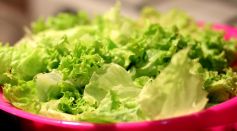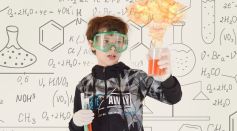CHEMISTRY

New Quantitative Method Detected More Plastic Particles in Salads Than Previously Thought

Useless Plant Part Found as Effective Biomass Source for Creating Sustainable Materials

Origin of Life Revealed! Protein Structures May Answer How Life Began on Earth

Carbon Dioxide May Be Converted to Solid, Helping with Industry Decarbonization
Converting Solid Biomass to Natural Gas Now Made More Efficient to Reduce Carbon Footprint

Indium in Mobile Phone, Television Screens: New Study Reveals How Graphene Could Replace Unique Metal Used in Electronic Devices

New Technology Harvests Carbon Dioxide From Smokestacks and Uses Greenhouse Gas to Create a Useful Chemical Substance

World’s Lightest Magnesium Form Developed: Scientists Introduce in New Experiments, Rare, Short-lived Isotope

Having a Pregnancy Dream? Decipher the Meaning Behind it with Kasamba Psychics

Edible Heavy Metals Considered Essential for One’s Health, But Which Elements Are Good or Bad for the Body?

Christmas Science Experiments: 5 Fun and Easy Holiday STEM Activities for Kids

Ocean Salinity: Seawater is Less Salty Today Than First 500 Million Years of Earth

UCF Scientists Develop the First Ever Optical Oscilloscope that Measures the Electric Field of Light

Hypercholesterolemia: Study Reveals Plastics' Potential Risk Factor to Developing High Cholesterol, Cardiovascular Disease
Most Popular

Starlink Satellite Explodes in Orbit; SpaceX Confirms It'll Re-Enter Earth

Aurora Phenomenon: How Geomagnetic Storms and Space Weather Are Lighting Up the World

What Causes Monsoons? How Seasonal Winds Shifts and Climate Patterns Drive Rainfall

Ocean Warming Explained: Why Climate Science Shows Sea Temperature Rise Is Speeding Up





